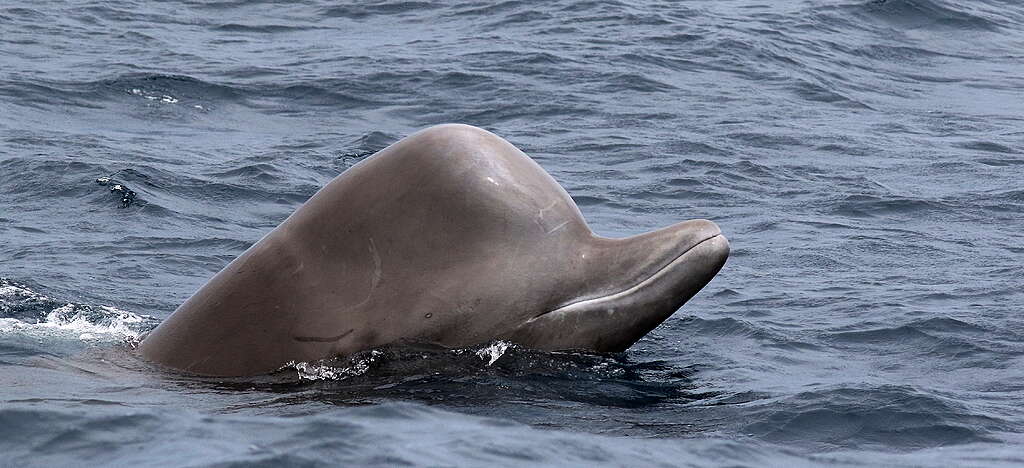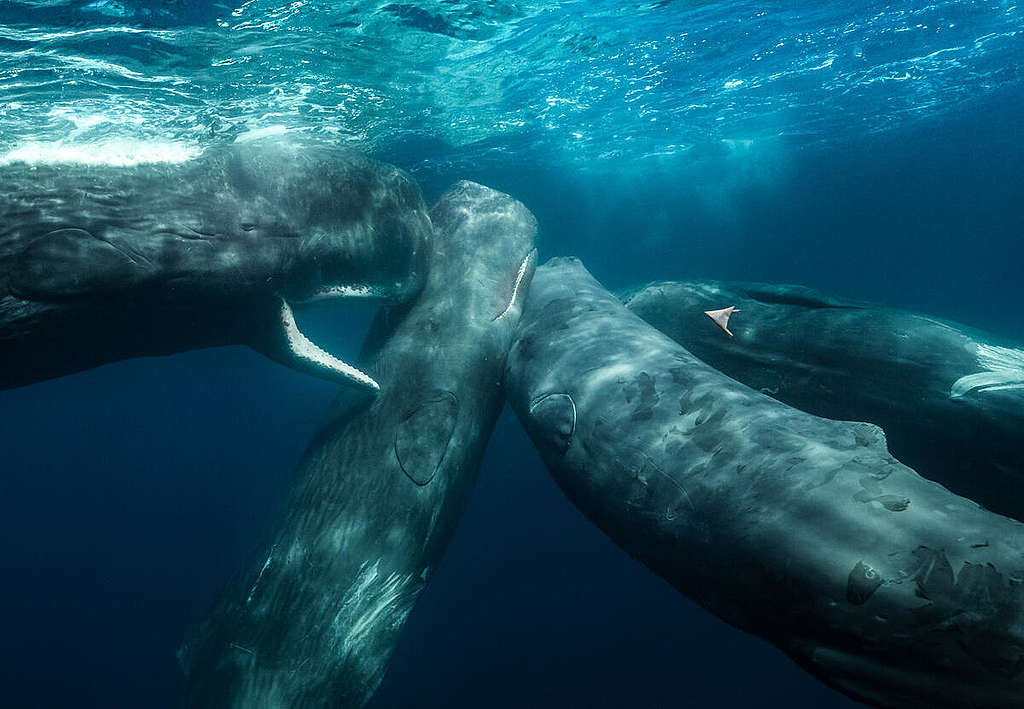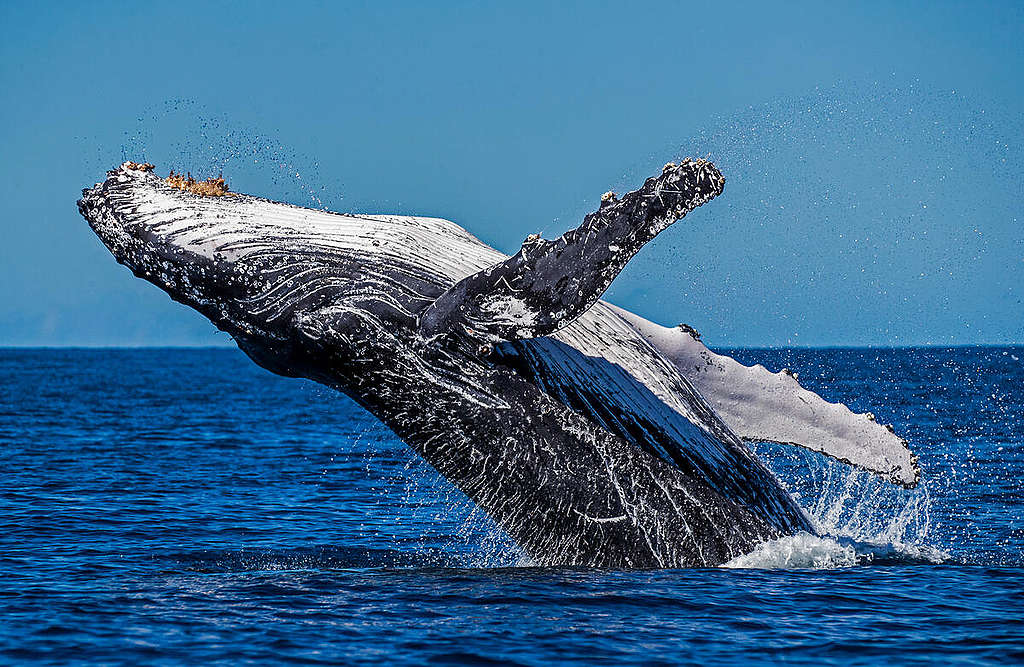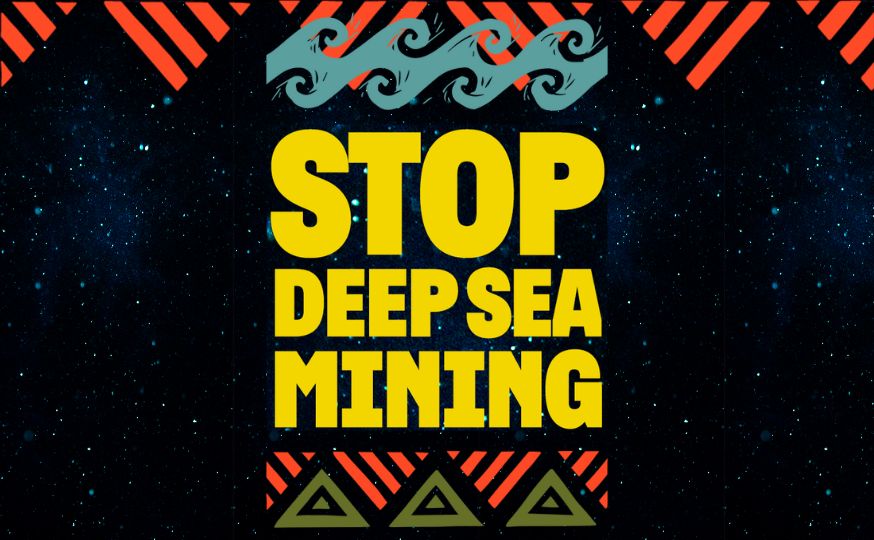The vast Norwegian Sea that stretches up to the Arctic is home to an incredible array of wildlife. Now, a new and alarming threat looms on the horizon north of the Arctic Circle: deep sea mining. The Norwegian government is planning to open areas of the Norwegian Sea to this harmful extractive activity. The proposed mining sites overlap with habitats for many marine species, including some amazing whales. The potential disruption caused by deep sea mining, particularly through noise pollution and habitat destruction, could have devastating impacts on these already vulnerable, sound-sensitive creatures.
Here we introduce three incredible whale species that can be found in the Arctic -including the regions where Norway plans to begin deep sea mining.
The Northern Bottlenose Whale

The northern bottlenose whale is a remarkable beaked whale known for its distinctive appearance. Its large, bulbous forehead, called a melon, aids in communication and echolocation. These whales inhabit deep waters and can dive for extended periods, primarily hunting squid near the seafloor.
Sound is crucial for northern bottlenose whales. They communicate through a complex range of calls and use echolocation clicks for navigation and foraging. Unfortunately, their population status remains uncertain. Historically decimated by whaling, these whales are now threatened by pollution and man-made noise. Studies show they are highly sensitive to acoustic disruptions from activities like military sonar and seismic testing for oil and gas drilling. If deep-sea mining commences in the Norwegian Sea, these sound-reliant creatures could be severely impacted. Therefore, ongoing research is essential to fill the knowledge gaps and help protect this poorly understood species.
The Sperm Whale

Sperm whales derive their name from the unique substance called spermaceti, found in their large, square-shaped heads. This wax-like substance, once used in candles and cosmetics, acts as a buoyancy aid and can withstand the pressure during their deep foraging dives. Sperm whales, inspiring both fear and awe, are famously depicted by the elusive Moby Dick.
These whales possess the largest brain of any animal on Earth and are capable of diving deeper than almost any other creature. In the ocean's dark depths, they use powerful sonar to forage for food and navigate, making clicking sounds for echolocation and to communicate with each other. The clicks can be compared to Morse code. Sperm whale pods have unique communication styles, even featuring regional accents.
Sperm whales are a cosmopolitan species and inhabit all of the world's oceans, from the Arctic to Antarctica. The females and young adults inhabit temperate and tropical waters, whilst the males prefer polar waters, migrating to warmer waters to breed. They have a unique defence mechanism against predators like killer whales and sharks: they put their heads close together with their tails outstretched, like the spokes of a wheel, with vulnerable calves protected at the centre.
Heavily hunted during the era of industrial whaling, sperm whale populations have yet to fully recover. Today, they face threats from human activities, including ship strikes, entanglement in discarded fishing gear, plastic pollution and noise. Sperm whales are categorised by the International Union for the Conservation of Nature (IUCN) as vulnerable globally and endangered in the Mediterranean Sea.
The Humpback Whale

Humpback whales are among the most well-known and beloved whales in the world. They are easily recognisable by the distinctive bumps on their heads, the pleats along their jaws, and their spectacular acrobatics and vocalisations. These whales often engage in elaborate surface behaviours, such as breaching and tail slapping, which create splashes visible from a great distance. Humpback whales make the longest migrations of any mammal on the planet.
Humpbacks make a wide range of sounds, including moans, cries, and even snores, which combine to form "songs". Scientists are still researching how these songs change through time and across populations. Many calls are believed to play a role in courtship, other sounds are calls between mothers and calves.
These whales also employ fascinating feeding strategies. One such technique is known as bubble-net feeding, where humpbacks blow bubbles to create a curtain or net that traps schools of fish.
Humpback whales inhabit every ocean and undertake extensive migrations between their summer feeding grounds near the Arctic and Antarctic and their warmer winter breeding grounds in the tropics. Before migrating, they must feed intensively to build up energy reserves.
Like many other whale species, humpbacks were heavily hunted for commercial purposes, leading to a drastic decline in their population. However, since the ban on commercial whaling, many humpback whale populations have recovered significantly from the brink of extinction.
Your support can help protect whales' homes
Greenpeace together with supporters around the world help protect majestic whales from human threats. We campaign for the creation of highly protected ocean sanctuaries where whales can safely live and for destructive deep sea mining to never start destroying their vulnerable natural habitats.
This August, Greenpeace International, Greenpeace Nordic, and Greenpeace Germany brought scientists to an area in the Arctic where Norway aims to allow deep sea mining. The scientists conducted visual and acoustic surveys of local cetaceans (whales and dolphins), particularly sperm whales and northern bottlenose whales. The findings will help us build knowledge on what species of whale inhabit areas that could be irreversibly destroyed. This can help strengthen the arguments for why opening up the Arctic to deep sea mining should never be allowed to happen.
If you are interested in learning more about whales in general, listen to Episode 3: Whales of Greenpeace UK's podcast Oceans: Life Under Water.
By protecting the oceans, you help protect whales.
We need a global moratorium to stop the launch of this destructive new extractive industry. Join the Campaign.
Dr. Kirsten Young is an ecologist working at Greenpeace Research Laboratories at the University of Exeter. She studies mammal populations, particularly whales and dolphins.







